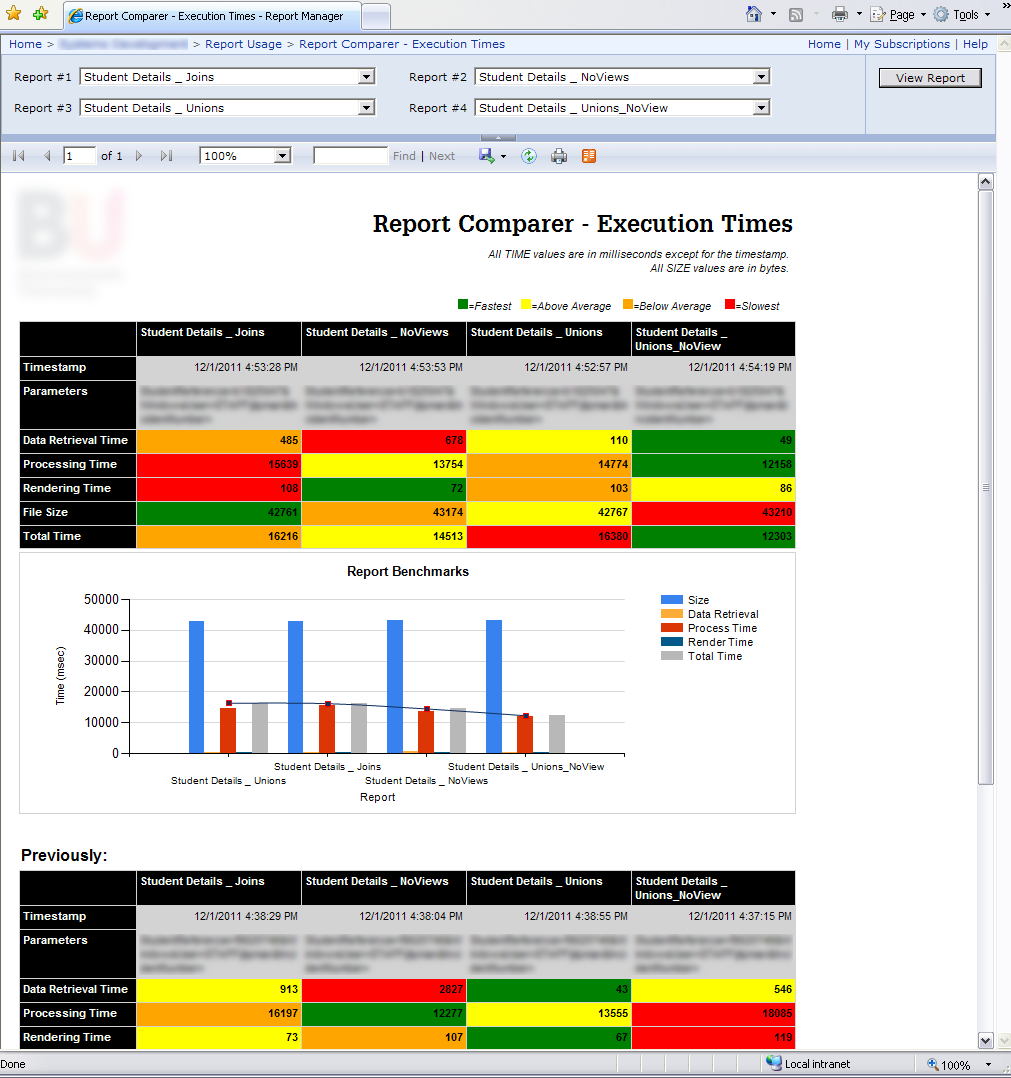What?
I have created an SSRS report which can compare 4 reports side by side and brings up their latest execution times to the nearest millisecond. The report has 4 parameters. Each parameter is a dropdown populated by a list of all available reports.
Why?
I want the report to be run with the 3rd and 4th parameter as
OPTIONAL. When I leave the 3rd and 4th parameter untouched (="<Select a value>"), the report complains saying "
Report #3 parameter cannot be blank!". Before you ask, I have ticked both "Allow Blank" and "Allow NULL".
How?
This is the tough part. I was reading up on the
MSDN page for the closest solution but it still didn't work for me. But the idea of inserting a NULL entry to select sounded good.
Aim / Objective
The plan will be to replace the default "<Select a Value>" with a custom null entry and the end-user will be none the wiser.












